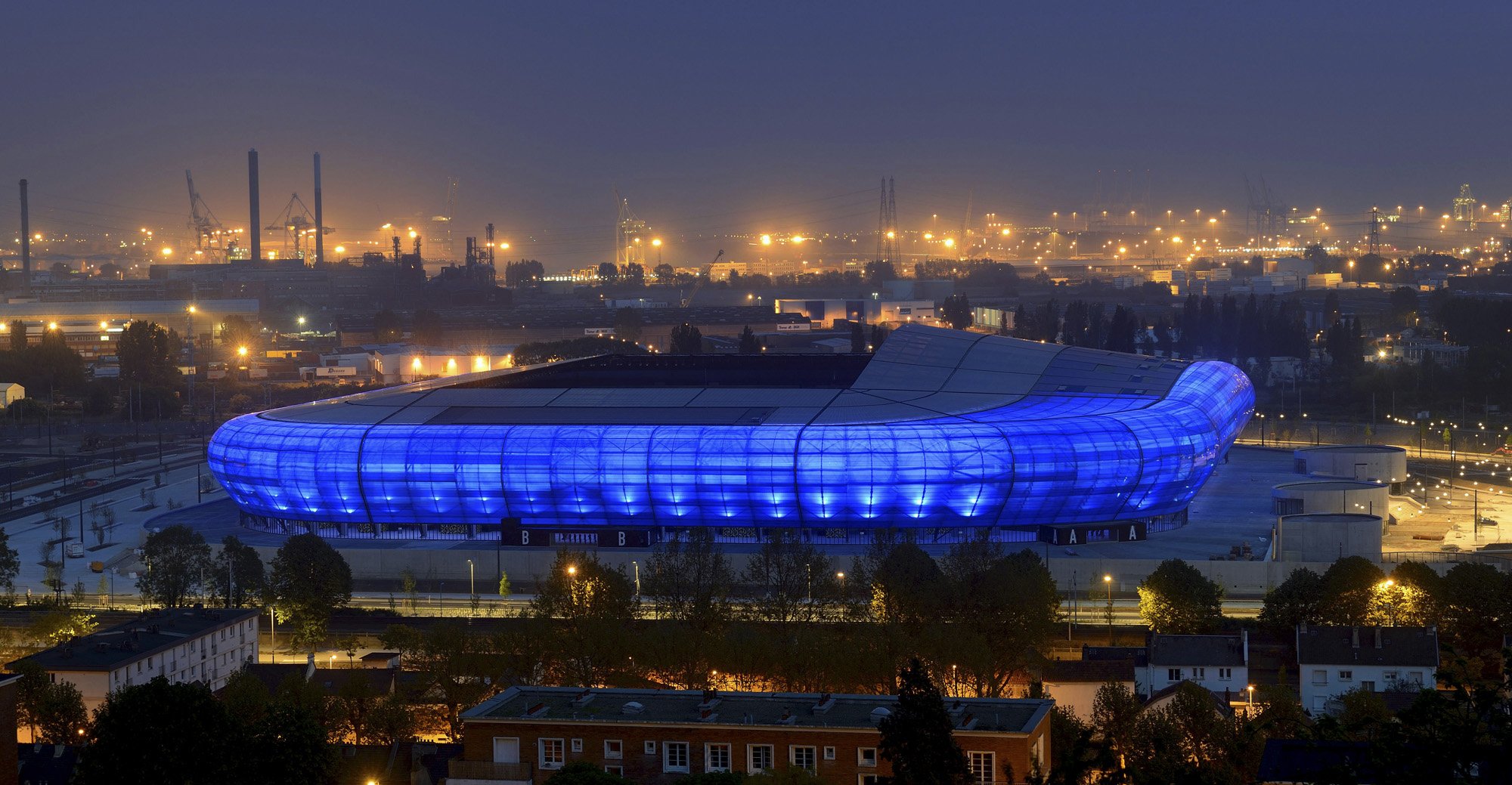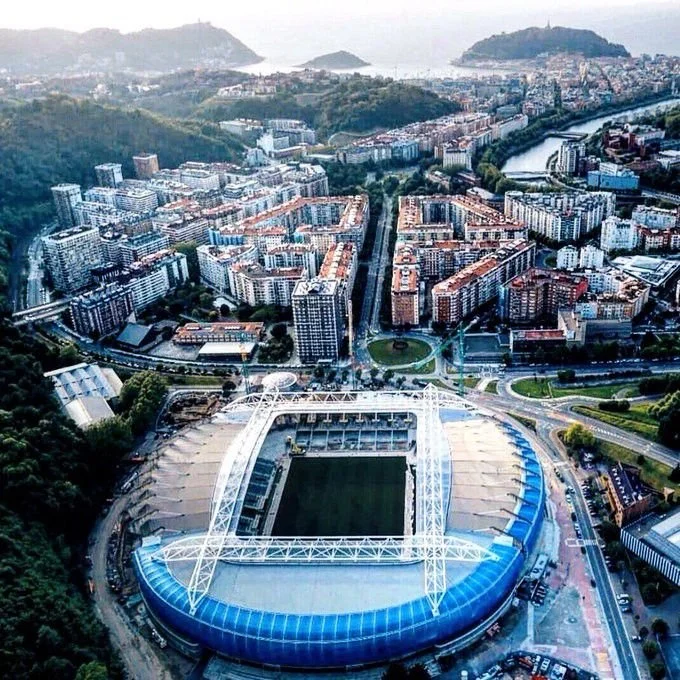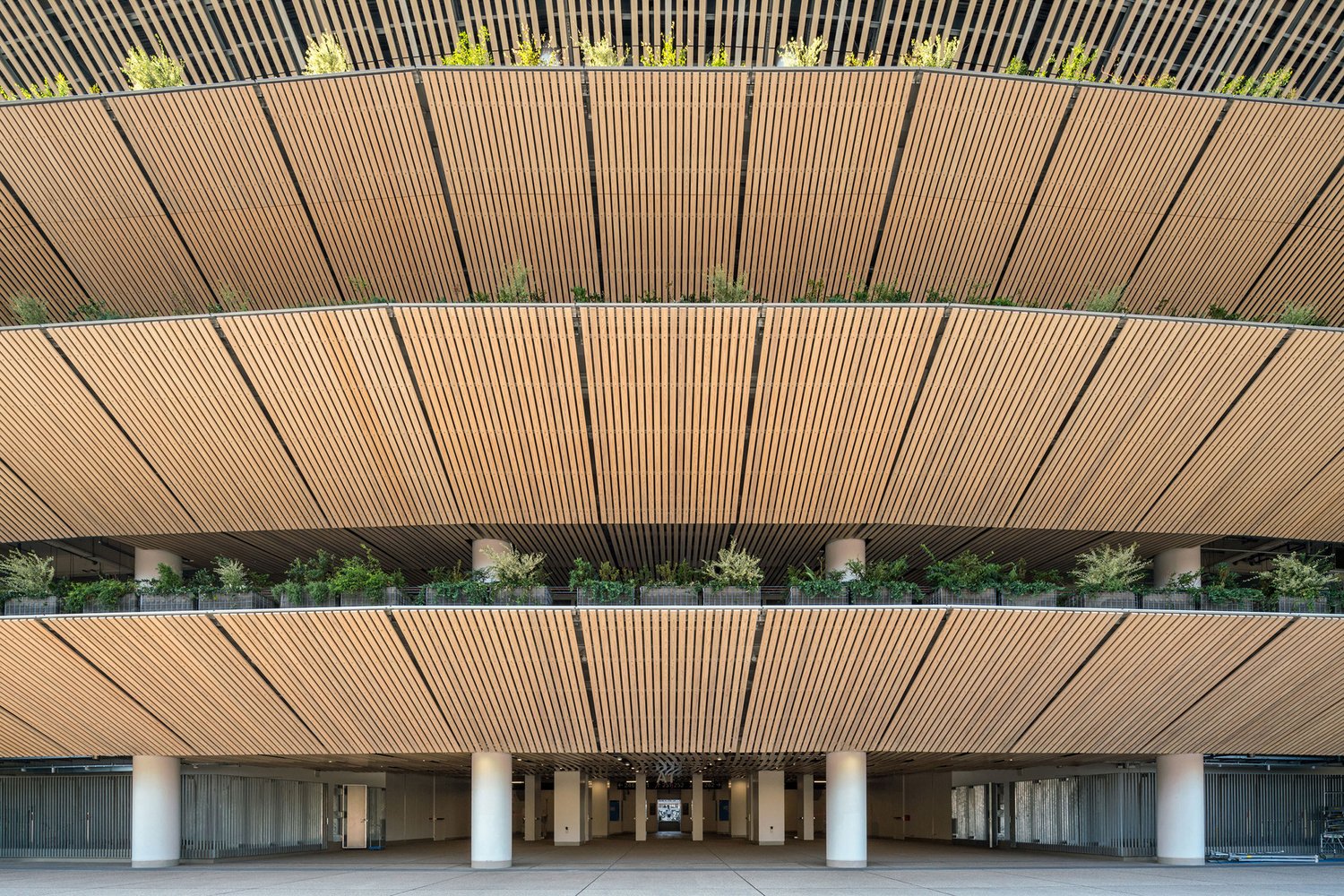
Sustainability
By 2050, 39 of the 92 stadiums in the top 4 leagues of English football will face a high risk from more than three climate hazards, such as extreme rainfall, drought, flooding and windstorms. With this challenge baring down on clubs, it is imperative that future design solutions are not only climate-resilient but where possible, climate-positive.
Tackling the threat of climate changes requires a new approach to stadium design and operation with an increased use of new and innovative materials, modern methods of construction and smart technologies. We look at some pioneering examples…
Leading the way with a sustainable design approach in the UK is Eco Park, the proposed new stadium of Forest Green Rovers FC, which is regarded as the greenest football club in the world following a study released by Sport Positive Leagues. The stadium, with seating for 5,000 fans, will be made almost entirely from wood and positioned within a landscaped parkland, with 500 trees and 1.8km of hedgerows planted at the site to promote biodiversity.
Ashton Gate, home of Bristol City FC, is one of a few clubs seeking to reduce its carbon emissions, with the installation of 460 solar panels on the stadium roof. The club’s investment in solar power is forecasted to reduce its carbon emissions by 20% and cut its energy costs by £150,000 over 20 years. In addition to clean energy, Bristol City FC has shown a commitment to single-use plastic reduction and biodiversity, which has seen the club ranked as the leading club in the Championship for sustainability efforts.
In France, Le Havre’s 25,000-seat Stade Oceane stadium is Europe’s first ‘carbon positive’ stadium, achieved through the use of Ethylene Tetrafluoroethylene (ETFE) cladding. The ETFE’s carbon footprint is much lower than comparable systems and weighs as little as 1 to 3% of traditional cladding systems.
Image: Mercedes Benz Stadium, Atlanta
In the US, MLS club Atlanta United’s Mercedes- Benz Stadium is pioneering a series of sustainable approaches. The stadium uses 29% less energy than most other stadiums worldwide through the use of LED lighting and 4,000 rooftop solar panels. The stadium has committed to achieving zero waste and composts the waste accumulated at the stadium for use in its urban garden, which grows food for the on-site restaurants. The stadium owners have installed a 2,100,000-gallon stormwater management system to combat the risk of flooding from stormwater, harvesting rainwater which is then used for irrigating the exterior landscape. The stadium is also equipped with a 1,100,000-gallon underground stormwater vault designed to capture and slowly release stormwater to help prevent flooding in the neighbouring communities.
Over the coming years, we can expect to see sports clubs demonstrate a growing commitment to their approach to ESG. It’s anticipated that future generations of supporters will be more likely to follow a team that leads the way off the pitch in terms of sustainability. We might even see brands base their sponsorship decisions on club’s sustainability performance as well as on-field performance.
Image: Eco Park, Stroud, UK
Sports stadiums have an important role to play as part of a smart city-led strategy for progressive city leaders.
In Amsterdam the local municipality is working in partnership with the Johan Cruijff ArenA to leverage it as one if its main smart hubs. The stadium is effectively functioning as a smart city testbed by providing companies the environment to test smart city-led products. Companies involved thus far include Microsoft, Huawei and KPMG, which have developed solutions for the venue around sustainability, connectivity, fan experience and mobility.
With the support of the Amsterdam Climate and Energy Fund (AKEF), Johan Cruijff ArenA worked with partners including the car manufacturer Nissan to develop an energy storage system in the stadium that captures the renewable energy produced from the 4,200 solar panels on the roof. Batteries from 148 used Nissan LEAF cars provide 3MW of storage with a capacity of 2.8MWh. The system is the largest European energy storage system in a commercial building.
The same partners have also developed a system which links a Vehicle2Grid charging station in the stadium to the stadium’s storage system. The system, with the permission of car owners, uses energy from the cars as additional storage and backup for the stadium but ensures that the battery is recharged when the owner gets in the car. The new system reduces the stadium’s electricity costs and contributes to a more stable electricity grid.
Anoeta Stadium, Sociedad, Spain
At the Spanish La Liga club Real Sociedad, the club has entered into partnership with Microsoft’s Global Sports Innovation Centre to identify tech- based solutions that would support the digital transformation of the club’s Anoeta Stadium. As part of the partnership, a Sports Thinkers Smart Stadium competition identified 11 companies and start-ups that could work with Real Sociedad to transform the Anoeta. Projects included tech solutions to support accessibility requirements for disabled supporters, energy management software, and a ‘smart kit’ product which allowed fans wearing a certain team kit to walk through turnstiles without a ticket and make contactless payment for food and drink in the ground.
Stadium 974 at the Qatar 2022 FIFA World Cup illustrated the art of the possible with flexible stadium design. Named after the 974 shipping containers used for its construction, the 40,000 seater modular stadium reduced construction costs, build time and material waste. The design of the stadium includes gaps between seats to facilitate natural ventilation, which means that artificial cooling is not required at the stadium.
In addition, many of the shipping containers integrated into the project were first used to transport construction materials to the venue.
Inspired by Stadium 974, the Premier League team Nottingham Forest had provisionally drawn up plans to take its City Ground capacity above 30,000 by erecting a temporary seating area built on shipping containers.
In Canada, Vancouver FC has introduced a new 7,000-seat stadium using a modular method of construction. The time between the stadium foundations’ preparation and the stadium’s construction is just four weeks, with the stadium prefabricated off site and then reconstructed in fragments on site. The process also allows the club to easily expand in the future with a quick and easy process for adding additional seating onto the stadium.
More from Sport+
Sport+ Nature
We look at some of the best global examples where nature has been used to embrace sports stadiums.
Sport+ Community
We spoke to Glen Sutton from Fulham FC to find out about the placemaking led approach to the re-development of their Riverside Stand at the historic Craven Cottage.
Sport+ Sustainability
The Johnan Cruijff ArenA in Amsterdam, home to Ajax FC, has pioneered an innovative new approach to generating energy within the stadium.







